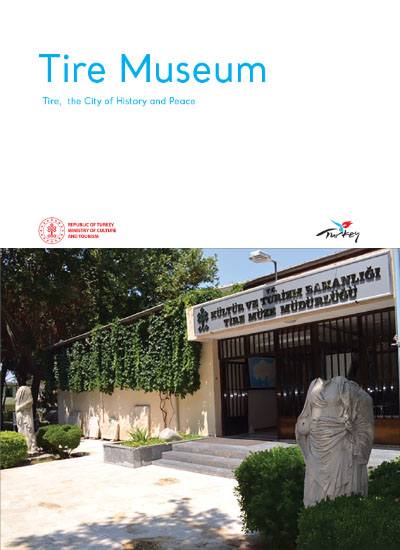The initial museum in Tire was founded in a small Islamic monastery commissioned by Halil Yahşi Bey, one of the commanders of Murat II. Registered by the Directorate General of Antiquities and Museums of the Ministry of Education in 1946, the museum was housed in Yahşi Bey Mosque from 1946 to 1971 before being relocated to its current location. The museum comprises two halls. The Archaeology Hall exhibits a range of artefacts dating from 3500 BC to 1100 AD, including sculptures, tomb stelae, marble table legs, marble and terracotta sarcophagi, glass and bronze artefacts, and terracotta figurines. The Ethnography Hall showcases writing tools, men's and women's clothing from the Ottoman period, hand-embroidered cot covers and peshkirs, European ceramics used during the Ottoman period, Çanakkale ceramics, paintings, and carpets. In addition to these halls, the museum also features outdoor exhibitions in both the front and backyard. The front garden showcases column heads made of marble dating back to the Hellenistic, Roman, and Byzantine periods, as well as sarcophagus fragments and terracotta pots. Meanwhile, the backyard displays tombstones from the Islamic period in chronological order. The Işıklı Sarcophagus The sarcophagus features reliefs with deer figurines that resemble the characteristics of Ephesus coins. Additionally, there are eagle, snake, and star-shaped appliques. The relief depicting a deer also includes the figure of “Kerkerion,” the Caduceus of Hermes. The oval-shaped head of the sarcophagus displays the letter “K” between the tree of life and its leaves. The letter 'K' can suggest three possibilities: the workshop where the sarcophagus was made, the initials of the deceased, or the Kerkerion, which is the Caduceus of Hermes, the guide of the dead. Marsiyas Marsiyas, a skilled shepherd and flutist, was invited by the patron god of music, Apollo, to a contest. The competition was held in front of a jury and Marsiyas was the winner, thanks to the vote of King Midas. Apollo was disappointed with this result and had Marsiyas' hands tied and his skin flayed. He turned King Midas' ears into those of a donkey because he believed that anyone who didn't appreciate Apollo's music must have the ears of a donkey.
TİRE MUSEUM


